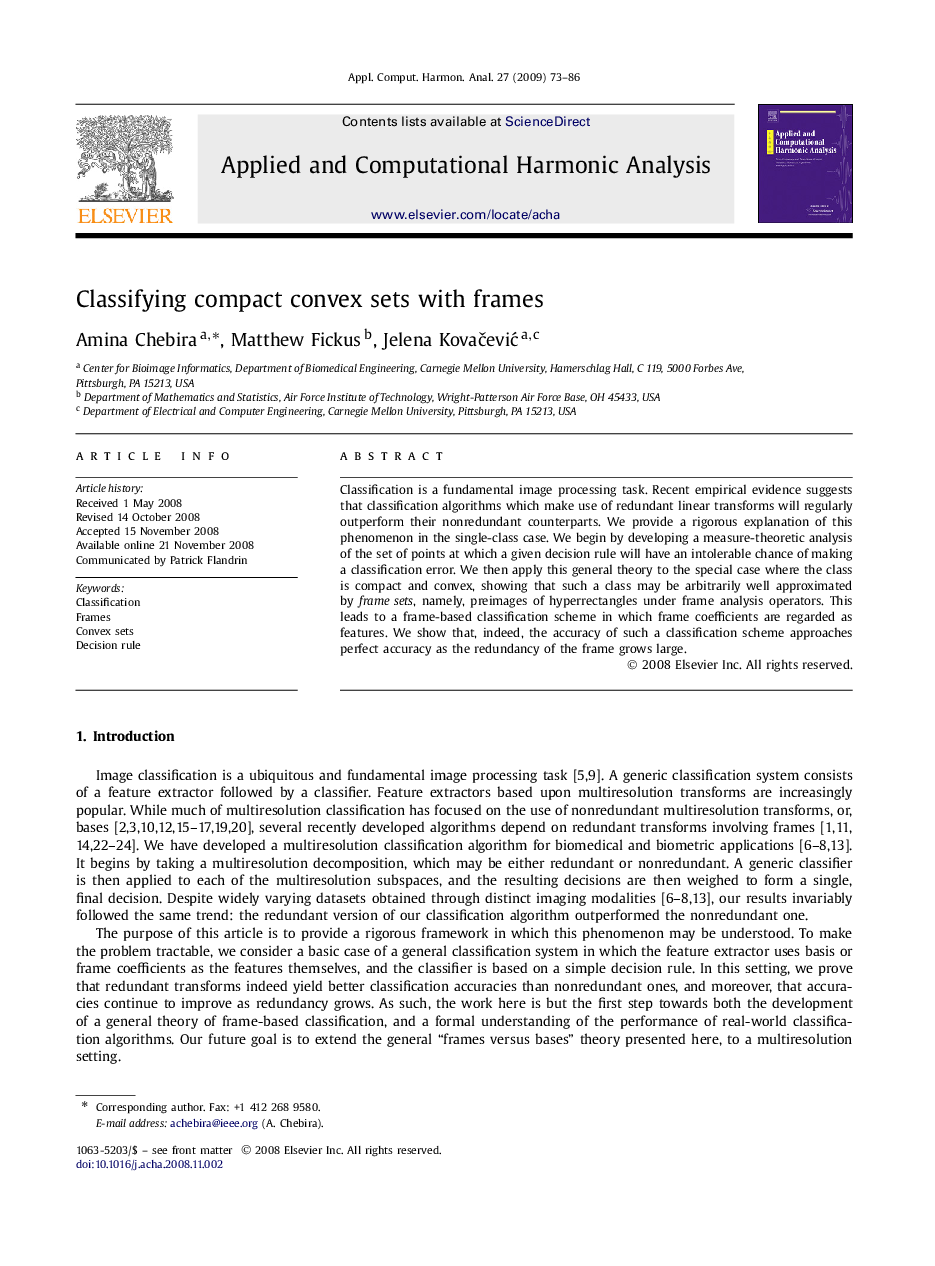| Article ID | Journal | Published Year | Pages | File Type |
|---|---|---|---|---|
| 4605413 | Applied and Computational Harmonic Analysis | 2009 | 14 Pages |
Classification is a fundamental image processing task. Recent empirical evidence suggests that classification algorithms which make use of redundant linear transforms will regularly outperform their nonredundant counterparts. We provide a rigorous explanation of this phenomenon in the single-class case. We begin by developing a measure-theoretic analysis of the set of points at which a given decision rule will have an intolerable chance of making a classification error. We then apply this general theory to the special case where the class is compact and convex, showing that such a class may be arbitrarily well approximated by frame sets, namely, preimages of hyperrectangles under frame analysis operators. This leads to a frame-based classification scheme in which frame coefficients are regarded as features. We show that, indeed, the accuracy of such a classification scheme approaches perfect accuracy as the redundancy of the frame grows large.
